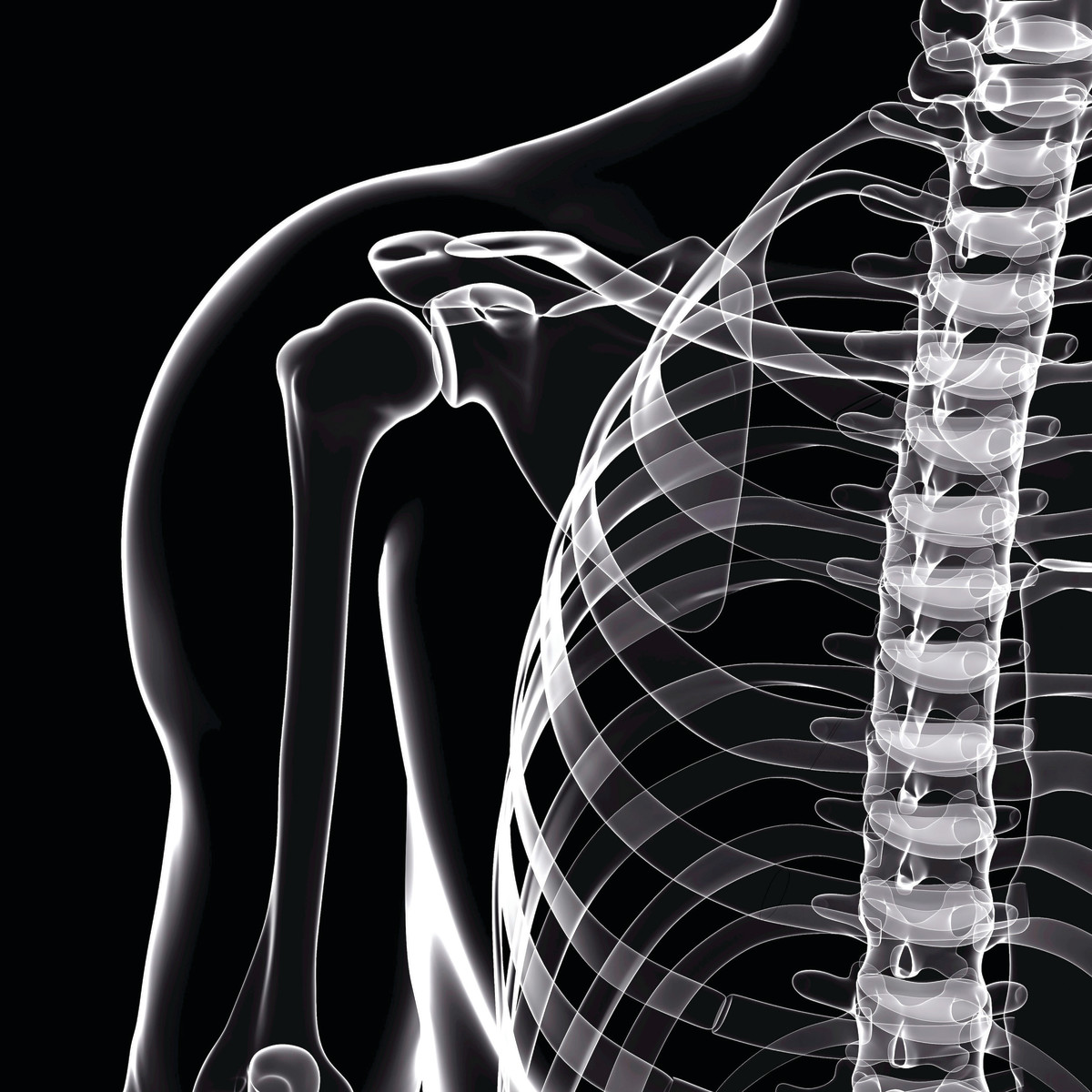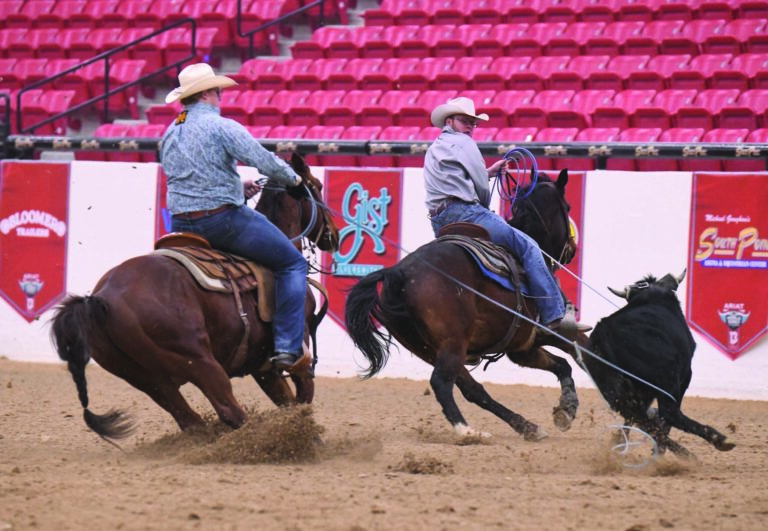IT’S PURE ANGUISH, LOSING YOUR THROWING ARM.
“Not being able to do what you’d been able to do for the past 10 years straight, and wondering if maybe you’d never be able to again, that was hard for me,” said Brandon Beers, a four-time NFR header from Powell Butte, Oregon.
It started as sharp pain in the front of his shoulder whenever he raised his right arm. An ultrasound showed slight tears in his biceps tendon. He kept rodeoing. It kept tearing. Eventually the ends of his fingers began tingling, too, and he started losing feeling in them.
Beers was getting injections for the pain and, in 2014, he was able to win rodeos in Cheyenne and Cody, Wyoming; and Nampa and Caldwell, Idaho, with Jim Ross Cooper. But just before that year’s NFR, Beers’ doctor said there was nothing left to do but fix the shoulder surgically.
“There was just so much scar tissue,” Beers said. “But I wasn’t going to skip the Finals to have surgery.”
[Read More: Battling Injury with Brandon Beers]
Don’t be like Beers. When you feel pain in your roping shoulder, it’s crucial to ask a doctor or physical therapist to determine the cause, and just as crucial to treat it with therapy and maybe time off. Beers would tell you it’s worth it to avoid surgery.
Surgeons opened him up in May 2015 and screwed everything together. Despite daily therapy for months, it literally took Beers until the beginning of last year before he could rope and feel strong without becoming sore. He won’t mince words—this has been miserable. It still hurt when he tried rodeoing in 2016, and he still wasn’t 100 percent in 2017.
IT’S COMPLICATED
There could be myriad causes for your shoulder troubles. It might be simple lack of mobility, like Jake Barnes faced after his thumb was sewn to his side for 30 days in 2005. Or joint pain could have a metabolic cause, as Trevor Brazile discovered while getting some elbow pain treated. This is where a professional comes in, and yes, you need a diagnosis.
“The shoulder is a complicated joint,” said Farley Schweighart, an Arkansas based physical therapist. “It’s basically three different joints working at the same time, and the biceps and triceps play a role, too. The shoulder is the most dynamic, mobile joint in the body, which means it’s the least stable joint in the body.”
Schweighart said that when any part of the biomechanical relationships in your shoulder aren’t correct, that’s when it wears down. Her father, Fred Schweighart, for years headed steers at Prairie and Southeastern Circuit rodeos, until finally, at Fort Smith one year, he could hardly lift his arm up. At that point, he underwent three shoulder surgeries in 10 months and extensive rehab. The 61-year-old was then able to return to roping.
Farley grew up heading in the roping pen, but now it takes a backseat to work. Part of the reason she’s so passionate about her job is that “there’s so much information for ropers about staying healthy that’s just not out there.”
Schweighart has worked for both the Justin SportsMedicine and Rodeo Sports Medicine teams. She’s covered several large events, including the Pendleton Round-Up, the Semi-Finals of RFD-TV’s The American and the Ram National Circuit Finals Rodeo. Plus, this month marks her ninth year working the Cinch Timed Event Championship.
In addition, Schweighart teaches at Arkansas State University in the physical therapy department and treats riders and horses via her own therapy business called Rider’s Edge: Therapy and Wellness (ridersedgetherapy.com).
BIOMECHANICS BASICS
“That forward-shoulder, slumped posture we have while driving or on the computer or looking at our phone,” Schweighart began, “if we stay in that posture, we’re not going to have good shoulder mechanics.”
Aside from sitting up straight, there are some stretches you can do to help the mechanics of your shoulder and warm it up prior to roping.
“Try stretching your arms out and rotating them back as far as they’ll go, then take a few deep breaths like that,” Schweighart said. “That’s key to spine mobility, to keeping everything open and moving.”
You can also stand with your arms stretched out 90 degrees and rotate to look behind you, keeping your hips straight. Basically, you can enhance the mobility and range of motion in your shoulder easily, without a gym or any equipment.
Here’s something that bears thinking about: roping does not strengthen your shoulder. We’ll say it again. Roping does nothing to strengthen your shoulder. It does much to reinforce muscle memory and technique, but nothing gets stronger. The only way to strengthen the shoulder is outside the arena. This is no different than baseball, Schweighart said. Pitchers do not get strong by pitching.
The muscles you want to tone and stretch in the shoulder joint are the scapular stabilizers and the rotator muscles. One way to strengthen these is to do shoulder-blade squeezes.
“You’re basically squeezing your shoulder blades toward each other, down and back toward the back pockets of your jeans,” Schweighart explained. “You can do this while you’re driving or at a stoplight. You squeeze those shoulder blades down and back and hold that for a three-count, 10 repetitions. Then you do a second set, holding it for a five-count and 10 reps, and then for a third set in which you hold the movement for a 10-count, 10 reps.”
You can expand this by doing the same motions over a big exercise ball, which adds core strengthening to the equation. Do the basic moves while lying over the ball, and you can also add what therapists call Ys and Ts. The former is comprised of all the same holds and reps of the shoulder-blade squeezes with your arms over your head in the Y position, and the latter is the same with your elbows straight out to the sides, 90 degrees.
RESISTANCE AND WARM-UP
All of the above exercises enhance your shoulder endurance and mobility, but you can strengthen even more by doing the moves using a resistance band (a set of three TheraBands costs $12 on Amazon).
Jake Barnes tried acupuncture, shock-wave treatments, Vitamin E and other supplements but, essentially, it was a lot of physical therapy with the band that got his shoulder moving again after it was immobilized for a month to allow his thumb to heal. The same NFR steer that had jerked his thumb off also yanked his shoulder and tore his biceps tendon.
You can run one of these bands through a tie-ring on your trailer to do the exercises Schweighart recommends for keeping your shoulder healthy. The illustrations on the opposite page show the movements that strengthen both the rotator and scapular stabilizer muscles. Straight-arm pull-downs add a little tricep work, too. All of it warms up the joint, which is important, as well.
“Often, we get saddled up, warm up our horse, get the steers’ horn wraps on and just pick up a rope and go,” she said.
Instead, for a warm-up, Schweighart recommends three exercises. First, spinal twists. To do these, extend an outstretched hand and twist to one side. Continue looking at your outstretched hand and hold for five seconds. Repeat this process three times for each side.
Next, complete a series of shoulder circles. For this warm-up, use both arms to make nice big, easy circles in front of your body. Perform five reps in the forward direction, followed by five reps in the reverse direction.
Finally, for your third warm-up, do a rotator cuff squeeze. This exercise is designed to activate your rotator cuff muscles. With your back to a solid surface, place your shoulder and elbow at 90-degree angles, with the back of your forearm resting on the solid surface. Push the back of your forearm into the surface, holding for five seconds. Repeat this process three times.

AVOIDING SURGERY
To avoid years of misery like those Beers has endured, pay attention when something is keeping you from lifting your arm above shoulder height, Schweighart said, and address that with a therapist. A doctor may or may not be necessary.
“People often think physical therapists are only used after surgery,” she said. “But we’re actually really good at preventative care and resolving chronic pain type injuries that have nothing to do with surgery.”
Instead of waiting until you can’t lift your arm, you can get help from a therapist trained in the modalities Schweighart uses at the mobile trailer during events, such as lasers, needling and cupping.
Lasers treatments received either before or after roping will improve blood circulation and decrease inflammation, while also improving oxygenation of your blood. Dry needling can help your body reset its own immune system so it can heal, and it increases natural endorphin release, which decreases inflammation and stiffness. And cupping uses suction to increase circulation, thereby decreasing tightness.
If you’re someone who has already had shoulder surgery and did the requisite rehabilitation, stick with the program.
“A lot of times, you work real hard to come back to the arena and then just go back to what you were doing,” said Schweighart. “But you need to continue to strengthen and work the soft tissues of the shoulder to stay healthy.”
Keep in mind, recent physical therapy literature discovered that 75 percent of rotator cuff injuries can be rehabbed without surgery. An operation is an expensive procedure with a very long recovery. Just ask Beers.
In the meantime, play smarter, not harder.








